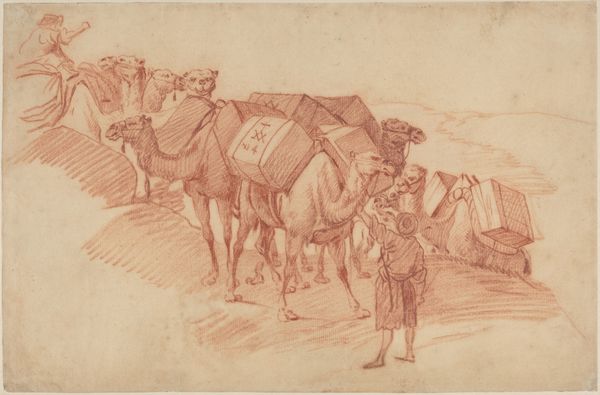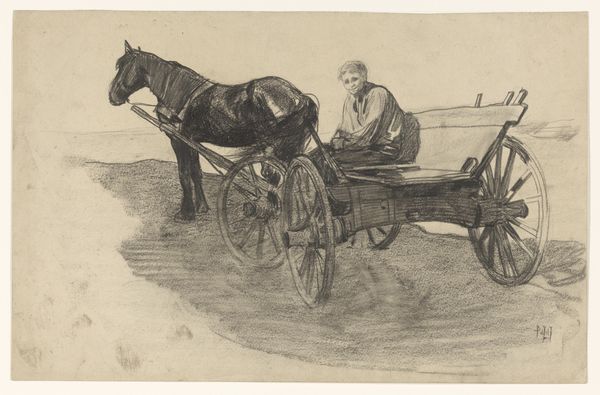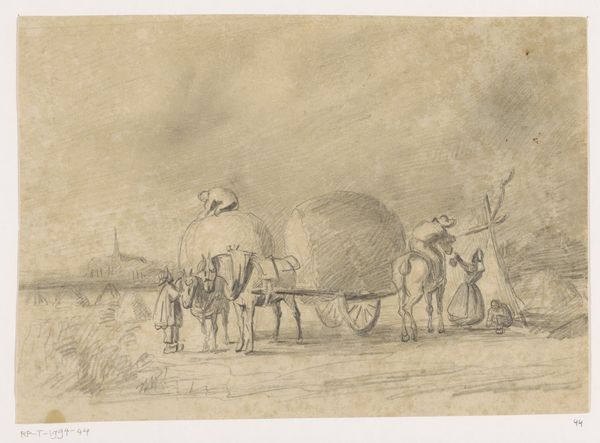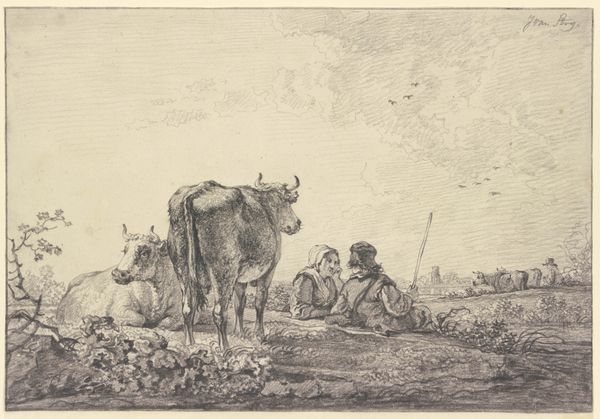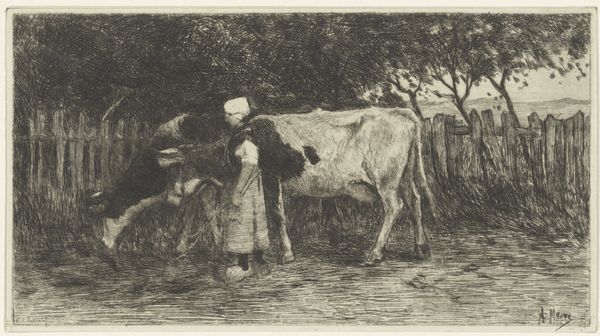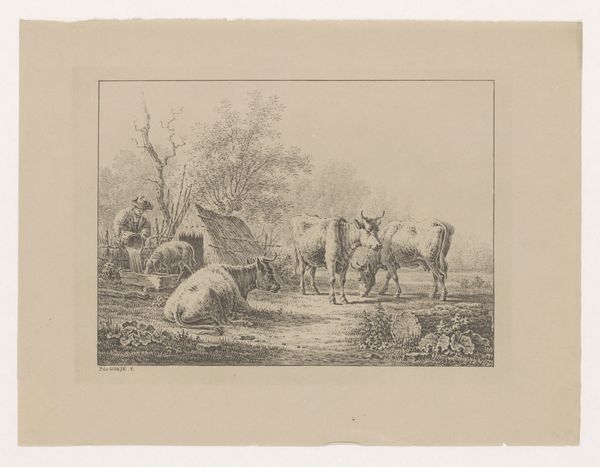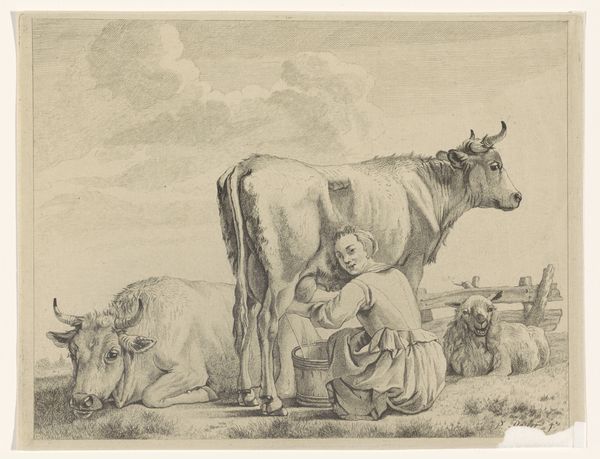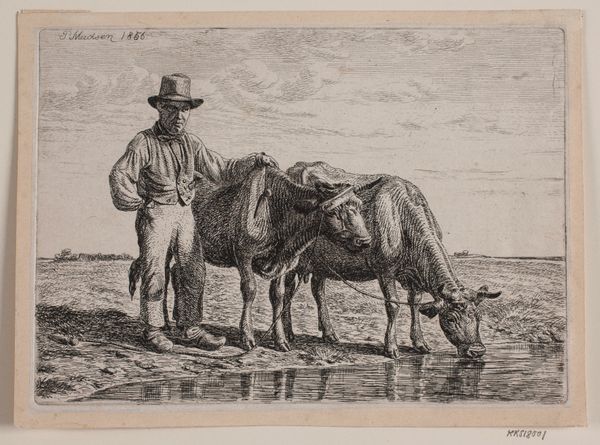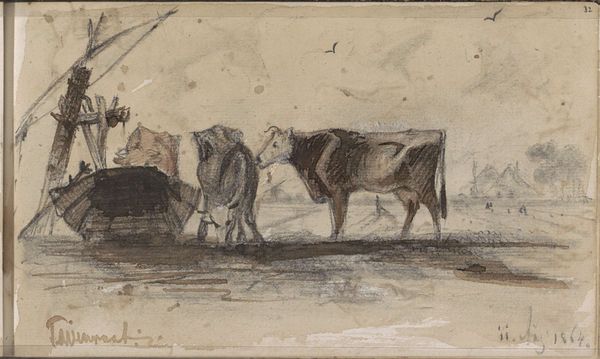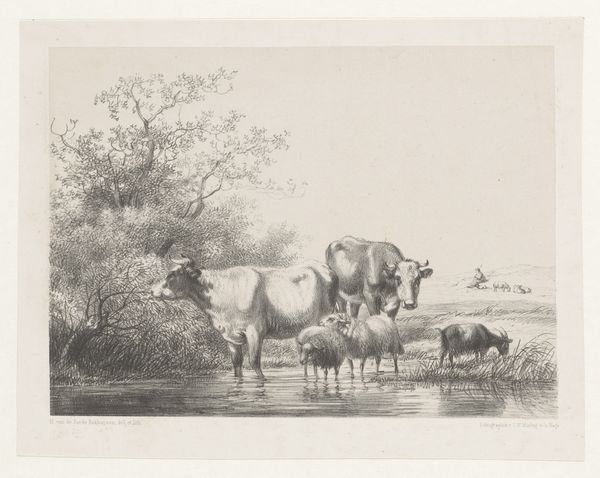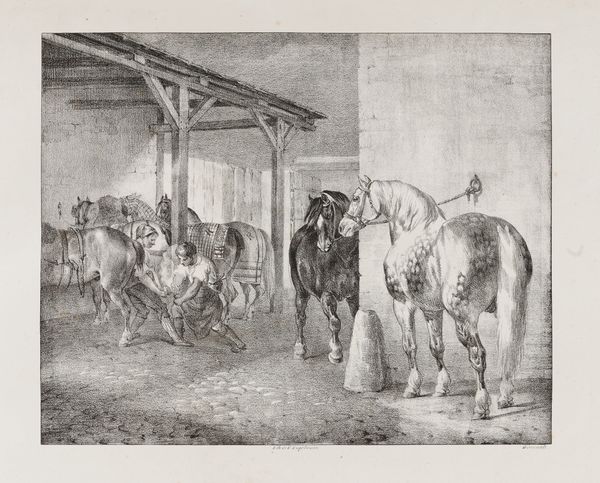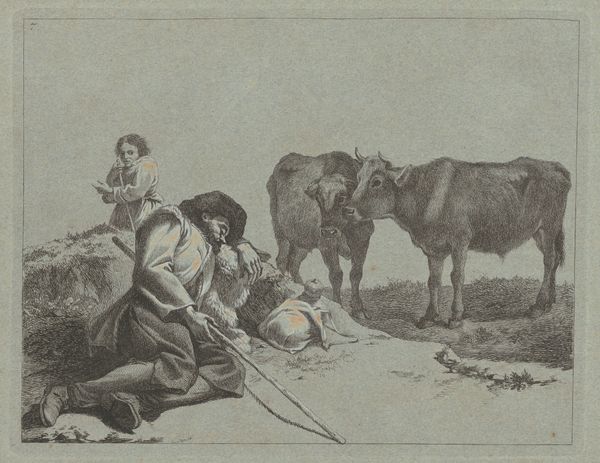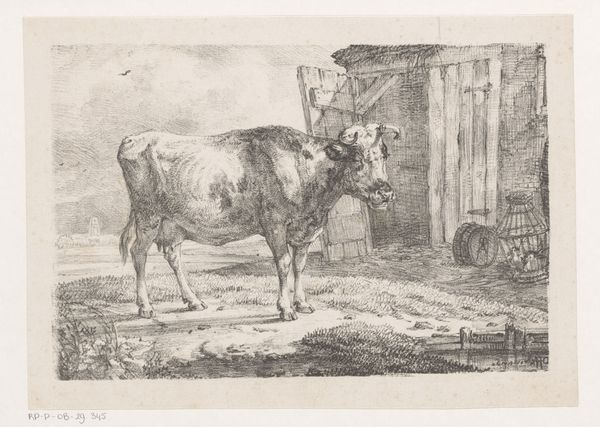
drawing, pencil
#
drawing
#
landscape
#
charcoal drawing
#
figuration
#
pencil drawing
#
pencil
#
genre-painting
#
realism
Dimensions: 22 7/16 × 32 11/16 in. (57 × 83 cm)
Copyright: Public Domain
Editor: Here we have Alfred Auteroche's "The Harrower" from 1872, rendered in pencil and charcoal. I'm immediately struck by the woman's quiet resolve as she stands beside those massive oxen. It’s a very still, very poised image, and yet tinged with a sense of burden. What’s your take on it? Curator: The quietness you observe is precisely the point. Consider the socio-political context. The mid-19th century witnessed increasing industrialization that displaced agricultural workers. This drawing, therefore, isn’t merely a genre scene but a statement. Editor: A statement about what exactly? The hardships faced by women in agriculture? Curator: In part, yes. But it's broader. Think about Realism as a movement. It aimed to depict the world as it was, without romanticization. Auteroche shows us labor, specifically gendered labor, in a way that compels us to confront the social realities of rural life. Where is the heroic narrative of progress? This drawing offers a critical perspective. What does her stillness communicate, beyond resolve? Is it perhaps resignation? Editor: I hadn’t thought of it that way. Resignation in the face of an inescapable destiny. Curator: Exactly! And how does that reading shift our understanding of Realism’s political aims? How does this depiction, contrasting her human scale to that of the oxen, speak to societal power structures and expectations imposed upon her? Editor: This makes me consider the limited agency of women at the time, how constrained their lives were, bound to the land... Thanks for the insight; it's so much deeper than what I initially perceived. Curator: It's in questioning our initial perceptions that we truly engage with art, recognizing its ability to reflect and critique the world we inhabit. Always look beneath the surface; the narratives art can unravel are infinite.
Comments
minneapolisinstituteofart almost 2 years ago
⋮
During the Paris Commune of 1871, Alfred Auteroche drove an ambulance for the Republican (national government) side, which defeated the revolutionary Communards who had seized control of Paris and established a government espousing the rights of women, children, and workers. A year after this bloody conflict, the artist exhibited The Harrower at the Paris Salon. The inscription, penned in Latin and French, means “To the man the sword, to the woman the plow”—seemingly a reference to the idea that women were left to work the fields as men fought for their political beliefs. This scene may thus have served as a memorial to the women burdened by the war, and the men lost in it.
Join the conversation
Join millions of artists and users on Artera today and experience the ultimate creative platform.
